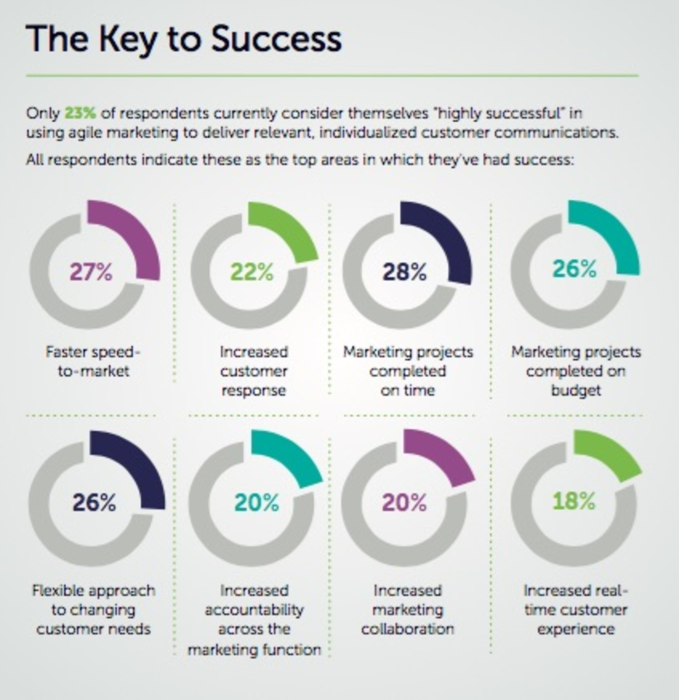The goal of the survey was to “understanding where the current state of marketing – specifically agile marketing – is,” said Ed Breault, VP of marketing and industry solutions for Aprimo.
Breault talked about agile marketing as two somewhat similar things: Big A, which is the rigid adoption of agile product development with sprints and scrums and consistent iteration and releases; and Little A, which is the adoption of the culture and mindset of agile marketing, that is – to try things out and release them on the fly.
“Agile has been trending over the years,” Breault said. “Gone of the days of the long-planned out, linear processes. You can’t go to market the same way you go before.”
But there’s still much work to do. The study, done in conjunction with Forbes Insights, asked 300 marketers for their opinions about agile marketing and the state of their operations.
Three out of four respondents said “agility of Marketing Operations” was a marketing challenge. The biggest impediment: 47% said “too much organizational bureaucracy” and 37% said the “difficulty proving the ROI of agile marketing.”
Breault said that even those who have not implemented agile marketing know the term and are interested in learning more.
“The [concept] has been around for quite awhile,” Breault said. If you haven’t heard of the term and you work in marketing, good luck.”
For the skeptics, Breault said that some people think agile isn’t going to work at their company because they think the process is unstructured and ad-hoc. “It’s actually a well-designed, focused process, he said.
The biggest enemy of agile marketing, according to Breault is “Legacy: legacy systems. legacy mentality, legacy process.”
He added: Agile is disruptive. Companies will look at all of the existing infrastructure that the organization has spent getting it to what it is today, so it’s going against a culture that is heavily invested in [the status quo].”








